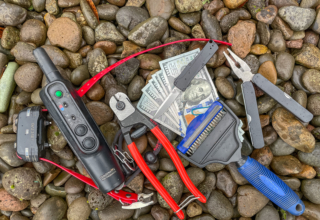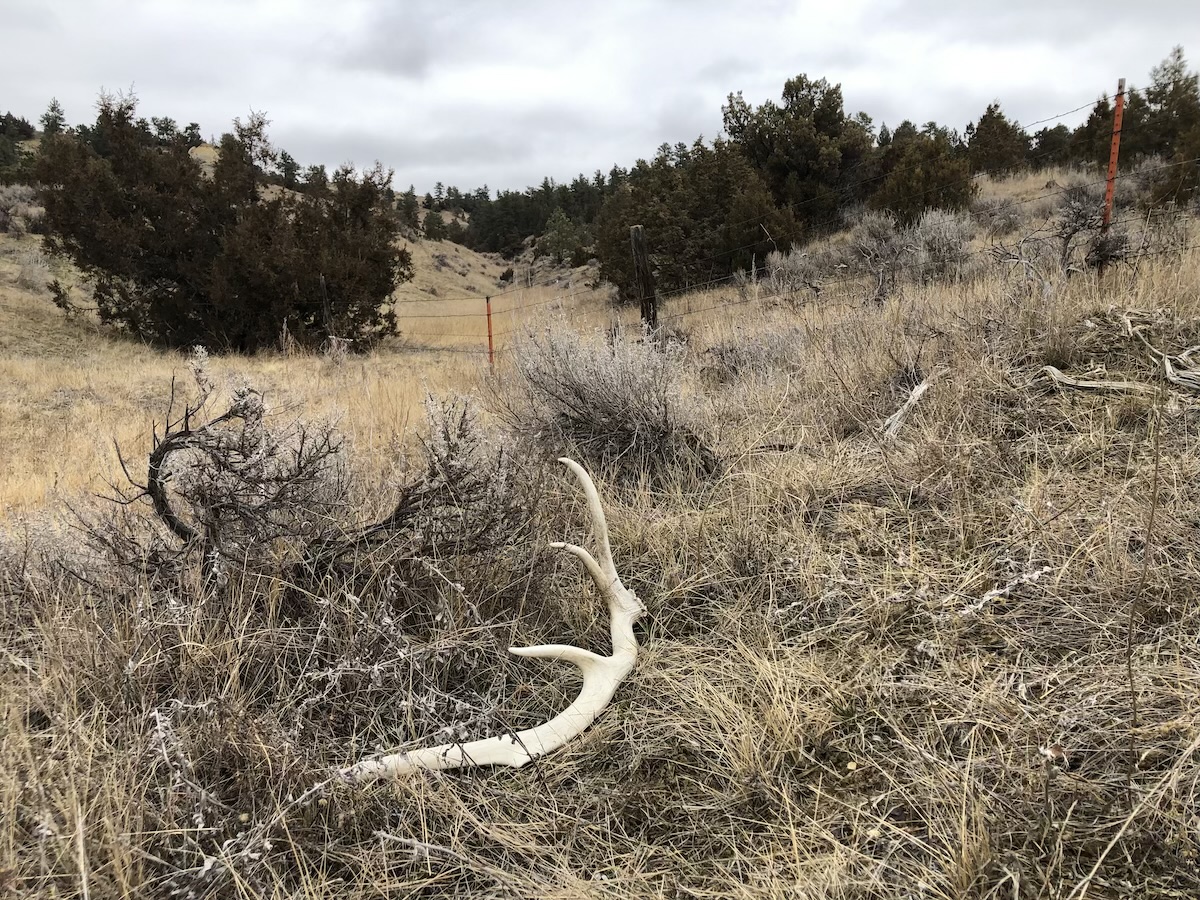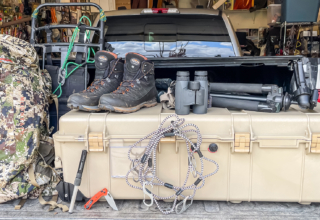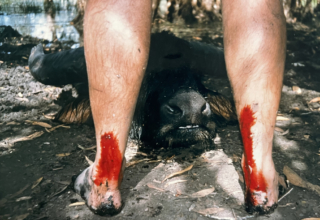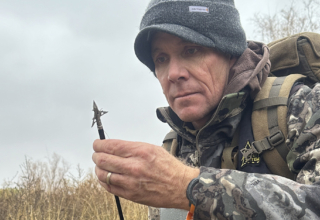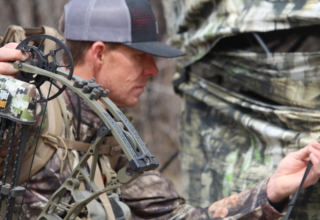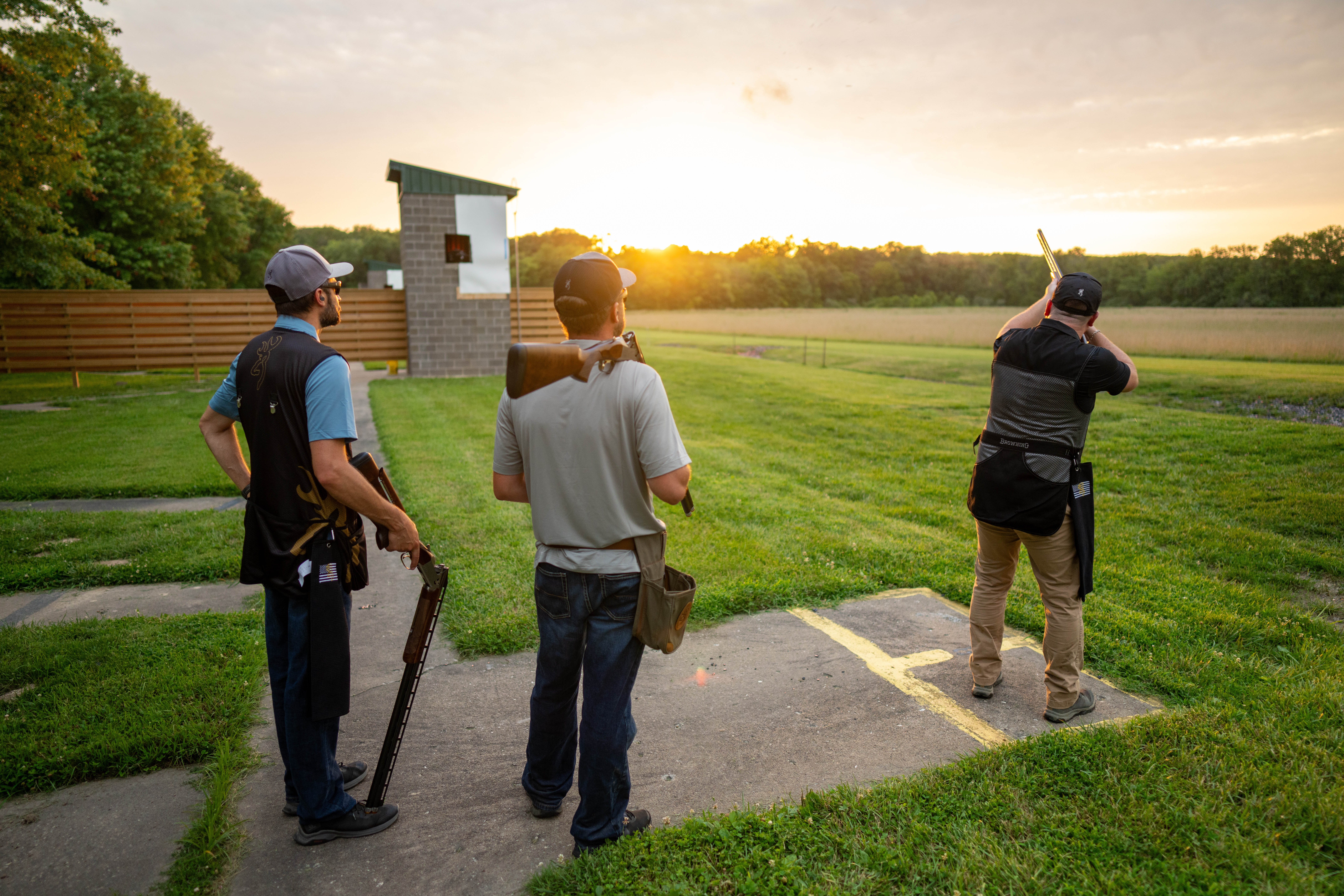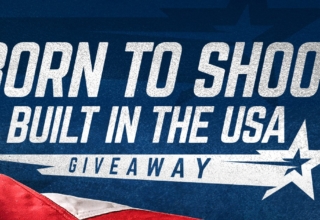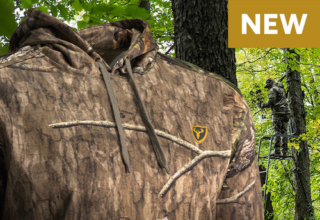Few things are as enjoyable as walking into the woods with a dog you’ve trained and coming out with a haul of shed horns. Here’s how to make your pup a shed-finding machine.
by Scott Haugen
I met a buddy at his place. He hopped in my truck, and we headed for the hills. He had a spot he guaranteed had lots of fresh deer sheds. He wanted to see my two dogs work.
I have two pudelpointers, and they love shed hunting. Echo, my 10-year-old female, has been shed-hunting her whole life. She’s found many deer and elk sheds. Kona, my male pudelpointer, is seven, and he found his first solo shed when we were quail hunting. He was three months old.
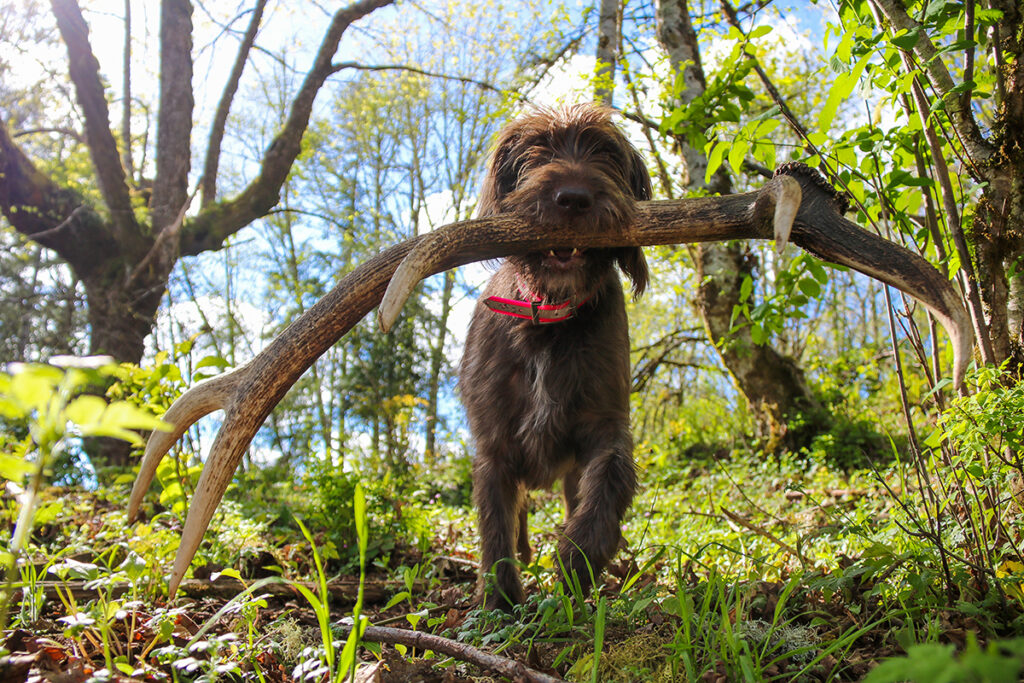
We drove down a private gravel road and went through a locked gate. It was my buddy’s land. “Perfect,” I thought. That is until we drove a half-mile and parked alongside another truck.
“My brother was going to meet us here; he wanted to see your dogs, too,” shared my friend. A few minutes later, his brother came out of the woods. The brother and his two friends were all carrying sheds. “We got here early, so we decided to get started,” he told me. My stomach turned.
Shed hunting with your dog takes dedication, and the goal is to set them up for success. I like hunting for sheds alone, just me and my dogs. That way, there are no distractions. The fact three men had just spent over an hour scouring the land for sheds meant they robbed the dogs of instant gratification and contaminated the area with their scent. Not to mention that once the dogs found a few easy sheds, it would have set the tone for the rest of the day. That didn’t happen.
Done right, shed hunting with a dog can take your success to another level. While picking up sheds, or any bones, comes naturally to most dog breeds, there are things to teach a pup that will help it become a more efficient shed hunter. As with all things related to dog training, starting the shed hunting process early in life, when they’re pups, is vital.

When your pup is eight or nine weeks old, cut off an antler tine from a deer or elk rack and give it to the dog. Avoid giving the pup a big shed with multiple points, eye guards, and burrs, as you don’t want it to get poked and have a bad experience.
When introducing the shed to your pup, lay down with it, get it excited, and let it mouth the antler. As the dog chews the antler, rub its ears, back, and neck and encourage it to keep going. Let it bite, lick, and chew on the antler. This will let the pup know that what it’s doing is great, and the more fun it’s having, the more of it the pup will want.
Take the antler away after a few minutes. If the pup starts to lose interest sooner, quickly move the antler around, getting the pup excited, and then take the antler away. By removing the shed when the pup is engaged, you’re instilling its desire to want more.
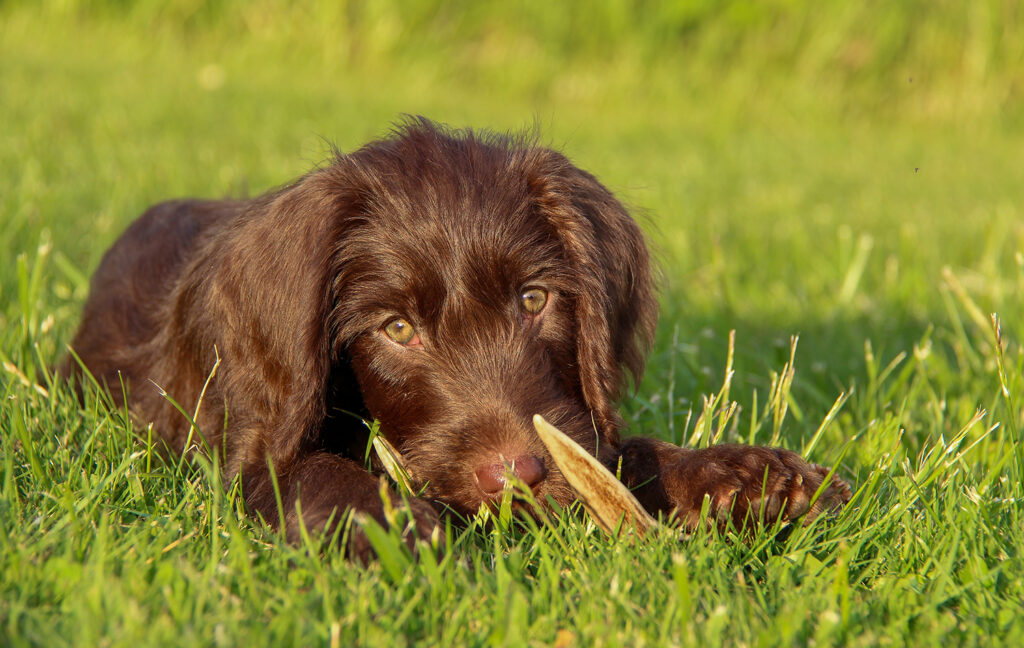
I have buddies who casually hunt for sheds with their dogs, and they’re fine with leaving sheds around the yard, in the house, and on the porch for their dogs to chew on whenever they want to. Some folks prefer this, claiming it provides constant antler sights and smells. If that’s your approach, fine. Personally, though, I want the playtime — actually training time — to be fun and brief. Antlers are not chew toys. I want the antlers to become something special with the end goal of the dog finding them, bringing them to me, getting verbal praise, and then returning to the search.
Repeat the session a few days after introducing a shed to a pup. Keep it fun and brief, and don’t let the pup run off with the antler. Get the pup excited about the shed. Don’t let it take possessive ownership of it. Take the antler away after a minute or two while the pup wants more.
Once a pup sees the shed and gets excited about what’s coming, hide it in the yard. Place it so the pup can easily find it after walking a few feet, and reward it with praise once it locates and picks up the shed. You may need a leash to direct the pup to the shed. Reward the dog for finding it and handing it over to you. Repeat this several times, ensuring the pup doesn’t see where you’re hiding the shed. Remember, you’re setting them up for success each time.
As the pup progresses and gains interest in the shed, tie it to a string and drag it on the ground. Moist grass is excellent for capturing the scent. I like tying it to a painter’s pole to get separation from my body so the pup isn’t smelling my boot tracks. Let the pup track the smell until it finds the shed.
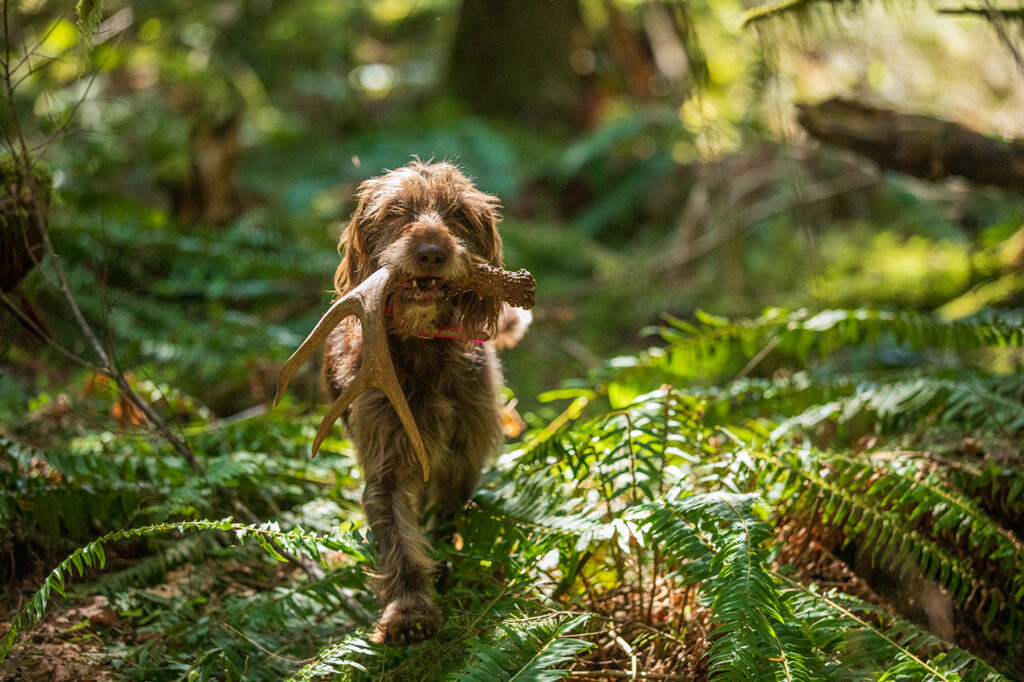
When the pup is comfortable with the piece of antler, introduce a full deer shed. Before the pup’s baby teeth start falling out, encourage it to pick up a shed. This will help it learn how to manage the awkward shed. Place the shed on the ground, tines down. Back up five feet, put the pup down, and give the command to fetch. The pup will likely run to the shed. This is why placing it with the tines down is essential.
Some pups may quit picking up a shed for a few months as their baby teeth start falling out. Reintroduce the shed at six or seven months once the adult teeth are firm.
When a pup starts training with a whole shed, it will learn to recognize it by size and shape. Bleached antlers on the ground hold little scent after a year or two. Your dog will find these sheds by sight recognition. Dogs are color-blind, so a white antler stands out to them. Using a plastic or rubber antler is an excellent tool for teaching sight recognition. Sight recognition training with a rubber or plastic antler is a perfect choice as adult teeth come in.

Hide the rubber or plastic antler in the yard for the pup to find. Place it where the pup can easily see it, then progress to hiding it in a field, along a trail in the woods, or even in the brush where the dog can locate it. Each time the pup should deliver the antler to hand. When the adult teeth are in, resume this training with an actual bleached shed.
As the shed training progresses, you want the dog to recognize the antler by its natural smell, not odors, which are transferred to the antler with bare hands. Wash the antler and handle it with rubber gloves when hiding it. Roughing it with abrasive paper will help freshen the antler’s scent and remove human odors.
When on the hunt for fresh deer and elk sheds, approach an area as you would when hunting upland birds. Head into the wind so the dog can smell the antler. Mornings are best because the air is heavy. The hotter the day gets, the harder it will be for a dog to smell a shed.
Follow deer and elk trails and locate bedding areas. Monitor tracks and obstacles like logs, fences, creeks, etc. Often, a jump and landing are enough to cause an antler — or two — to fall.
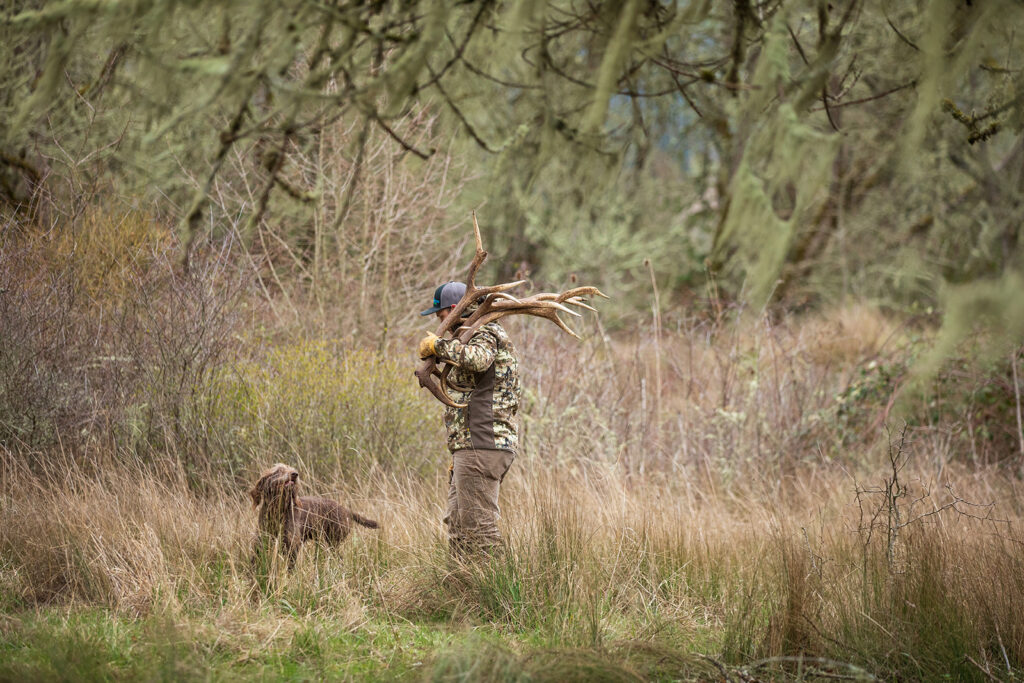
I do a lot of scouting with trail cameras. When I see antlers starting to drop, it gets exciting. But if several deer or elk are in an area, I give them time before scouring it with my dogs because I don’t want to spook the animals out of there before they drop. If I know a target buck or bull has shed and I don’t want coyotes or foxes to run off with the sheds, I’ll often search for the sheds in the middle of the day when animals are less active. I’ll take one dog with me on a leash, and when I find the shed, I’ll get the dog downwind of it and let it go. It’s a short retrieve, but it’s setting the dog up for success. Once all the bucks or bulls have shed, I’ll go into the area with both dogs and scour it to see what they can find.
I shed hunt in some very brushy habitat and always carry some sheds in my pack. If we’re not finding anything, I’ll plant the sheds for the dogs to find. Again, it’s all about having them succeed. After all, they can’t find what’s not there.
With my dogs, we’ve found whitetail, mule deer, blacktail deer, Roosevelt elk, Rocky Mountain elk, and moose sheds. They love it and know when we’re shed hunting versus just going for a walk in the woods. That’s what proper training teaches.
Working with your pup at a young age and remaining disciplined and consistent will increase your shed-hunting joys and successes. It’ll be so fun shed hunting with your dog, you won’t want to go out alone.


